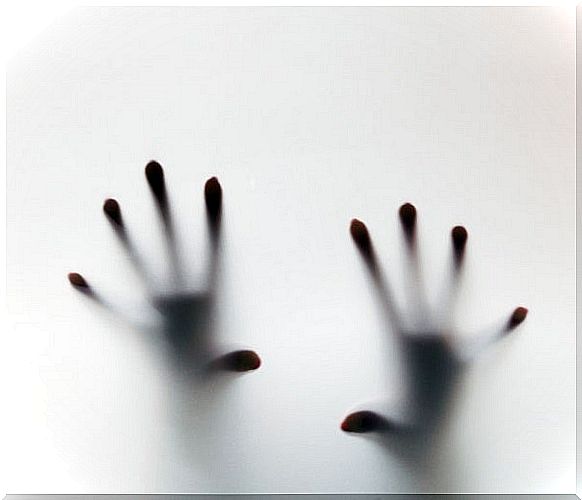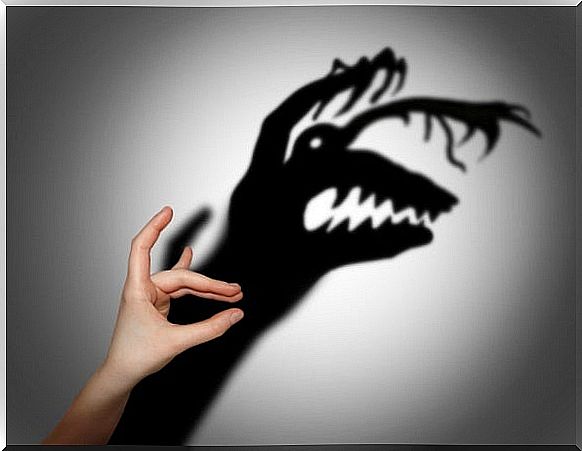How To Manage The Symptoms Of A Panic Attack

A panic attack is a sudden feeling of intense pain or emotional discomfort that causes so much anxiety that the person suffering from it fears losing control, that the feeling will never go away and that it will eventually kill them. In reality, these attacks are not life-threatening.
Panic attacks can happen without any warning signs and can even wake someone who is deeply asleep. They can last for a while, but usually no longer than between 10 and 20 minutes. If you’ve ever had one, you already know it’s not a pleasant experience.
It is estimated that 30% of the population has experienced or will have a panic attack at some point in their lives. It is also estimated that this occurs between the ages of 15 and 19. Of these panic attacks, 3% will develop into a panic disorder.
Below we will show you how to manage a panic attack. But before we do that, it’s interesting and important to analyze and understand what exactly a panic attack is and what its specific symptoms are.
Symptoms of a panic attack
A person having a panic attack will have at least four of the following symptoms :
- Accelerated heart rate and even palpitations
- To sweat
- Spasms
- Trouble breathing
- A feeling of drowning or choking
- Chest pain
- Nausea
- Feeling faint and dizzy
- Unrealistic feeling or feeling of being separated from the body
- A stinging, tingling, or numbness
- Chills or hot flashes
- Fear of going crazy
- Fear of dying
There is no pattern in panic attacks. Some people experience multiple panic attacks in a day and then go without them for months, while others experience them once a week.
Panic attacks can be caused by other health problems, so it’s important that anyone experiencing these symptoms see a doctor to determine if there is an underlying cause. Certain heart problems, respiratory problems, hormone imbalances, or stimulants such as caffeine can all cause similar symptoms.

Why does panic arise?
A panic attack happens when something triggers fear or a fight-or-flight response. The body’s nervous system then produces adrenaline and this surge of adrenaline can cause distressing feelings and sensations.
When the nervous system responds normally to a fearful situation, the adrenaline level quickly adjusts and returns to normal when the situation is over. This does not happen during a panic attack and it may take a while for the body to fully recover from the symptoms it experiences during the attack.
Often there is no obvious cause that causes the symptoms. The brain may try to explain or justify the feeling with irrational thoughts such as “I should die” or “I’m going crazy”. A panic attack can also be triggered by a stressful situation, such as traveling by plane or speaking in front of a large audience.
The part of the brain called amygdala is directly involved in panic attacks and anxiety disorders. This brain structure has a high voltage response when exposed to an unfamiliar situation or after a highly stressful event.
The real cause of panic attacks has not yet been scientifically proven, but research suggests that a combination of genetic, biological, psychological and environmental factors may make a person more prone to panic.

Managing the symptoms of a panic attack
After proper medical and psychological testing, which rules out other underlying disorders, the symptoms of a panic attack can be managed in several ways.
Knowledge
Knowledge is essential for managing panic attacks. Learning how fear works in the brain can help you see a panic attack for what it really is: a misfire in the amygdala that triggers a surge of adrenaline.
It is crucial to understand that these symptoms have nothing to do with a serious illness. As terrible as it is, it helps to remember that the panic attack will not lead to death.
Breathe easy
Our natural instinct is to breathe faster when we panic. Taking control of your breathing is the first step to managing the panic attack. The goal is to inhale and exhale slowly so that you don’t hyperventilate and ingest too much carbon dioxide.
To do this, slowly breathe in through the nose and out through the mouth with your lips slightly pursed. You hold your breath for a few seconds before exhaling. After a few times it will become easier and your breathing will become calmer.
Relaxing the muscles
Another successful strategy is learning how to relax your body. One way is to tense and relax some muscles. This can help reduce tension in general and lower stress levels.
A good place to start is the feet. Tighten the muscle group while taking a deep breath. Hold your breath for a few seconds and then exhale, relaxing your muscles at the same time.
Full attention
Full attention, also known as mindfulness, is a way to live in the present and accept thoughts as they are, without being overwhelmed by them. During the process of a panic attack, we process thoughts in a way that quickly leads to disaster thoughts, so focusing on letting these thoughts go is a helpful technique.
Movement
Regular exercise is necessary to stay healthy and should be part of everyone’s life. Exercise can help relieve stress and support the body’s production of natural chemical substances (endorphins) that are vital when it comes to reducing pain and a general sense of well-being.
Plan in advance
If you know that certain situations will lead to fear or will remind you of past situations where you have felt fear or panic, take a deep breath and try to relax. Another option is to seek distraction and not think about your panic. And if you know this can happen, prepare for it.
For example, wear layers of clothing so you can take something off if you get really hot or look for a way to cool yourself down. Another option is to always have water with you to stay hydrated. Drinking water will also help you stay calm for this simple reason: the brain receives the message that there is no danger, because if there was, you wouldn’t be drinking water so calmly.
Eat healthy
Regular healthy eating helps to keep blood sugar levels normal. To do this, make sure you never eat anything for more than four hours. It is also important that you are not deficient in nutrients in your body and you should avoid caffeine and alcohol as these substances can trigger and worsen panic attacks.









